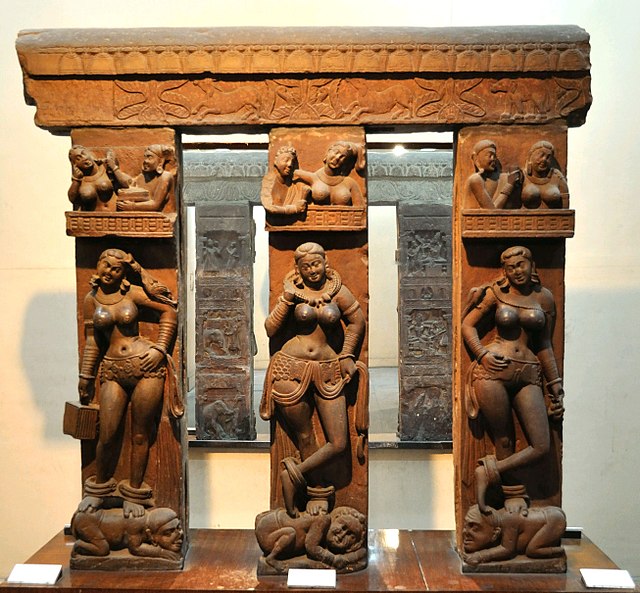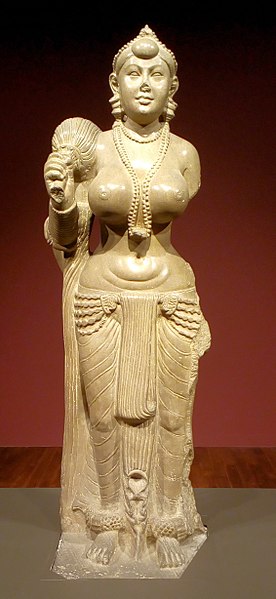The Bhutesvara Yakshis, also spelled Bhutesar Yakshis, are a series of yakshi reliefs on a railing, dating to the 2nd century CE during the time of the Kushan Empire. The reliefs were found in the Bhuteshwar mound, around the remains of a Buddhist stupa, outside Mathura, and are now located in the Indian Museum in Kolkata, with three pillars, and three more pillars and one fragment in the Mathura Museum. They are an important example of Mathura art, of which these and other yakshi figures are "perhaps the best known examples".
Bhutesvara Yakshis, Mathura, 2nd century CE. The Buddhist reliefs of the back of the pillars are visible in the mirror behind. Indian Museum, Kolkata.
The Bhutesvara Yakshis in the Mathura Museum.
Back of the pillars with Buddhist reliefs (Indian Museum, Kolkata). The holes for the cross-bars can be seen in the sides.
Lady holding a bird cage.
Yakshinis or Yakshis are a class of female nature spirits in Hindu, Buddhist, and Jain religious mythologies that are different from Devas and Asuras and Gandharvas or Apsaras. Yakshinis and their male counterparts, the Yakshas, are one of the many paranormal beings associated with the centuries-old sacred groves of India. Yakshis are also found in the traditional legends of Northeastern Indian tribes, ancient legends of Kerala, and in the folktales of Kashmiri Muslims. Sikhism also mentions yakshas in its sacred texts.
Didarganj Yakshi 3rd century BCE – 2nd century CE Patna Museum, Patna
The Bhutesvara Yakshis, Mathura, 2nd century CE.
Yakshi under a flowering asoka tree. Shunga, 2nd–1st century BC, India
A Yakshin, 10th century, Mathura, India. Guimet Museum.







